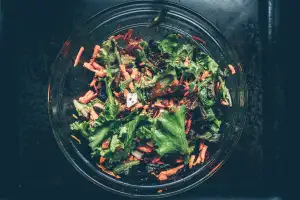Master the Art of Cooking Frozen Salmon: Expert Tips and Techniques

Importance of Properly Thawing Frozen Salmon
Properly thawing frozen salmon is crucial to ensure a safe and delicious final dish. When salmon is thawed slowly in the refrigerator, it allows for a more even thaw, preserving the texture and flavor of the fish. Thawing at room temperature or in warm water can lead to bacterial growth and compromise the quality of the salmon. By following proper thawing methods, you can maintain the integrity of the salmon and enhance its natural taste profile.
Thawing Methods: Refrigerator, Cold Water, Microwave
Thawing frozen salmon properly is crucial to ensure a safe and delicious cooking experience. There are three main methods for thawing salmon: refrigerator, cold water, and microwave. Thawing in the refrigerator is the safest method as it allows for a slow thaw, typically taking around 24 hours. Cold water thawing involves placing the sealed salmon in a bowl of cold water, changing the water every 30 minutes until thawed. The microwave method should be used as a last resort, using the defrost setting in short intervals to prevent cooking the fish.
Preparing Seasonings and Marinades
When preparing frozen salmon, selecting the right seasonings and marinades can elevate its flavor profile. For a simple yet delicious option, consider a mixture of olive oil, lemon juice, garlic, and fresh herbs like dill or parsley. This combination adds brightness and enhances the natural taste of the fish. Alternatively, you can opt for Asian-inspired flavors by using soy sauce, ginger, honey, and a touch of sesame oil for a savory-sweet twist. Experiment with different combinations to find your favorite flavor profile that complements the rich taste of salmon.
Cooking Techniques: Baking, Grilling, Pan-Searing
When it comes to cooking frozen salmon, there are several techniques you can use to bring out its delicious flavors. Baking is a popular method that involves placing the salmon in the oven at around 375°F for about 15-20 minutes until it flakes easily with a fork. Grilling is another fantastic option that adds a smoky flavor to the fish. Preheat your grill to medium-high heat and cook the salmon skin-side down for about 4-5 minutes per side. Pan-searing is a quick and easy way to cook frozen salmon. Heat oil in a pan over medium-high heat, place the salmon skin-side down, and cook for about 4-5 minutes on each side until crispy and cooked through. Each of these methods offers a unique way to enjoy your frozen salmon with minimal effort.
Recommended Internal Temperature for Cooked Salmon
When cooking salmon, it is crucial to ensure that it reaches the proper internal temperature to guarantee its safety and optimal taste. The recommended internal temperature for cooked salmon is 145°F (63°C). At this temperature, the salmon will be fully cooked, moist, and flavorful. Using a food thermometer is the most accurate way to determine when your salmon has reached the desired temperature. Remember that the fish will continue to cook slightly after being removed from heat, so it's best to take it off just before it reaches 145°F (63°C) to prevent overcooking.
Serving Suggestions and Garnishes
Once your perfectly cooked frozen salmon is ready, it's time to elevate the dish with delicious serving suggestions and garnishes. For a simple yet elegant presentation, consider topping the salmon with a squeeze of fresh lemon juice and a sprinkle of chopped fresh herbs such as dill or parsley.
For added depth of flavor, serve the salmon alongside a tangy citrus salsa made with diced oranges, grapefruit, red onion, and cilantro. The bright acidity of the salsa complements the rich taste of the salmon beautifully.
To add a touch of decadence, drizzle a homemade dill sauce over the salmon before serving. This creamy sauce made with Greek yogurt, fresh dill, lemon juice, and garlic adds a luxurious finish to the dish.
For an extra crunch, consider topping the salmon with toasted almond slices or crispy fried capers. These garnishes not only add texture but also enhance the overall flavor profile of the dish.
Remember to pair your cooked frozen salmon with sides that complement its flavors such as roasted vegetables, quinoa salad, or garlic buttered potatoes. With these serving suggestions and garnishes, your frozen salmon dish will truly shine on any dining table.
Published: 06. 05. 2024
Category: Food



